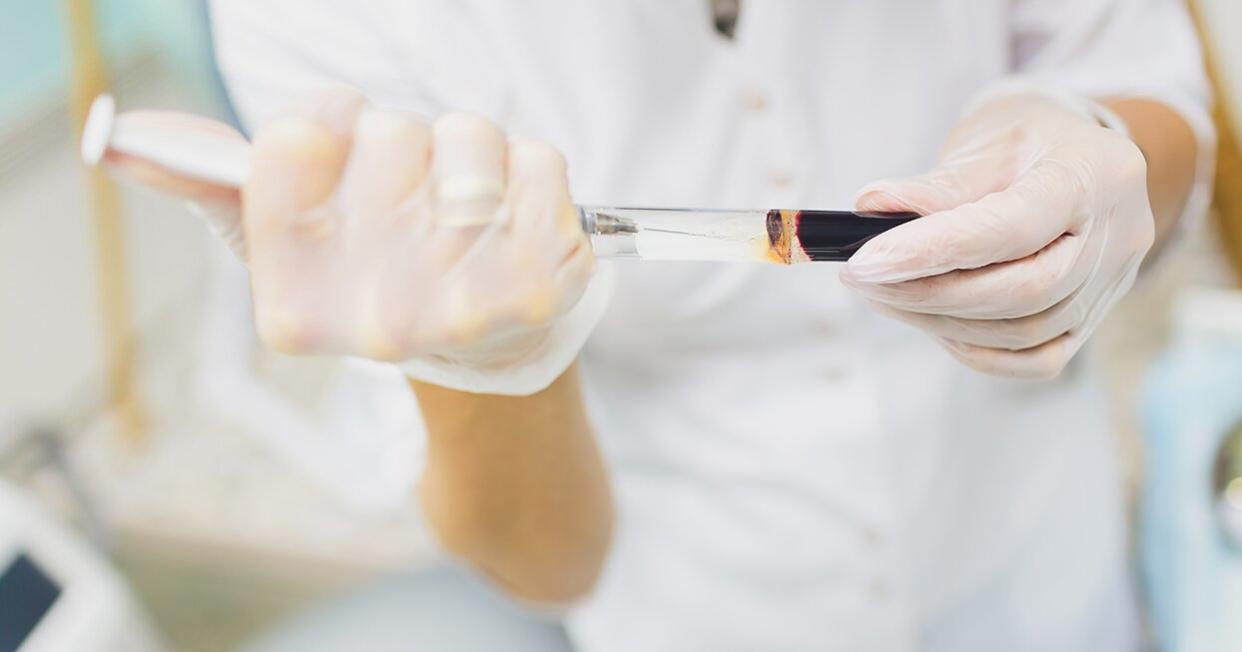Everything You Should Know About PRP Injections for Hair Loss

Photo: Vershinin/Getty Images
By now you've likely heard about the platelet-rich plasma's (PRP) skin-care potential, if not from a mention of Barbara Sturm's notorious "blood cream" then from the Kardashians' reviews of vampire facials. PRP isn't just being used to encourage collagen production in people's faces, though. In recent years, it's emerged as a potential tool for fighting hair loss. People are having their PRP injected into their scalps in hopes of promoting hair growth. (Related: People Are Tattooing Their Under-Eyes As a Way to Cover Up Dark Circles)
As with the vampire facial, the treatment starts with drawing your own blood, then spinning it out using a centrifuge to separate the PRP from the red blood cells. A doctor then numbs the area and injects the isolated PRP into your scalp. "When people lose hair, the follicles don't go away, they just become dormant," explains Bruce Katz, M.D., dermatologist and director of the JUVA Skin & Laser Center in New York. "When we inject PRP into the scalp, it actually stimulates the stem cells in the hair root that turn on the hair follicle again." In addition, PRP contains six growth factors, so it stimulates blood flow to the hair follicles, encouraging the hair to grow normally again, he says.
The treatment requires repeated visits, but recommendations on frequency vary by doctor. "We do monthly treatments four to six times, depending on how quickly the hair grows," says Dr. Katz. "And then we just do maintenance twice a year." Each appointment lasts no more than 30 minutes from start to finish, he says. (Related: Everything You Need to Know About Hair Loss-Like How to Stop It)
The most common cause of hair loss in women, female-pattern hair loss, affects millions of women, according to the American Academy of Dermatology. The hereditary condition usually leads to gradual loss, often a widening part or overall thinning. Hormonal changes, certain medications, a physical or emotional shock, or wearing excessively tight hairstyles can also cause hair loss, according to the Mayo Clinic.
Other treatments for hair thinning or loss range from taking "hair skin and nail" supplements, which may not offer substantial results, or OTC minoxidil (i.e. Rogaine), as well as or more invasive options such as hair transplant surgery.
FYI, the average cost of PRP hair restoration is around $2,075, based on reviews from Realself, a platform for information and reviews on cosmetic procedures. For comparison, the average reported cost for hair transplants on Realself is $7,075.
While PRP injections haven't proven to be effective in people who are completely bald, otherwise, people with various other levels of hair loss can benefit, says Dr. Katz. There are a few exceptions you should note. Anyone with existing conditions where hair loss is a known side effect, such as lupus or thyroid disease aren't good candidates for the treatment, reports the Cleveland Clinic. Additionally, people who are on blood thinners tend to get weaker results from PRP, since the medication can make the platelets less effective. (Related: Scalp Microblading Is the Latest "It" Treatment for Hair Loss)
There's no shortage of impressive before-and-after photos on the web, and research on the treatment is promising. "There is more hope on the horizon, [for people who experience hair loss] as a growing amount of research indicates that a procedure known as platelet-rich plasma therapy can provide effective treatment," the American Academy of Dermatology stated in a press release last month. So if you aren't weirded out by the thought of repurposing your blood, it might be worth exploring.

